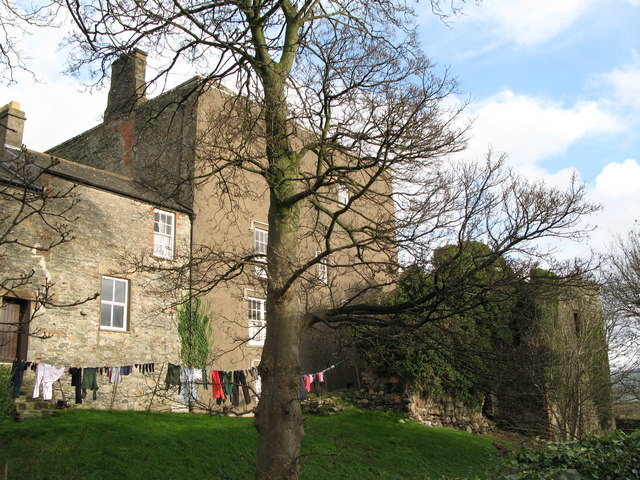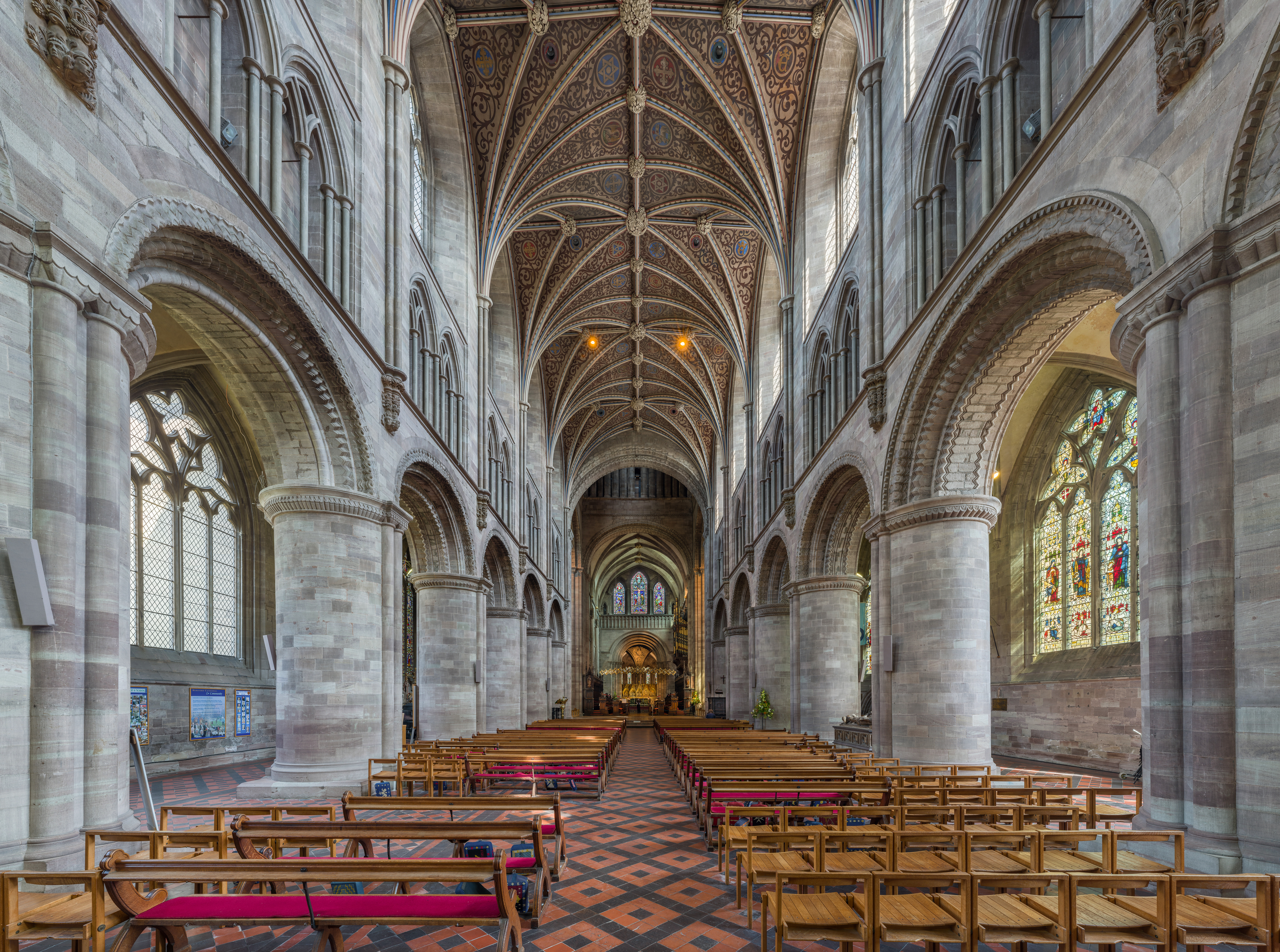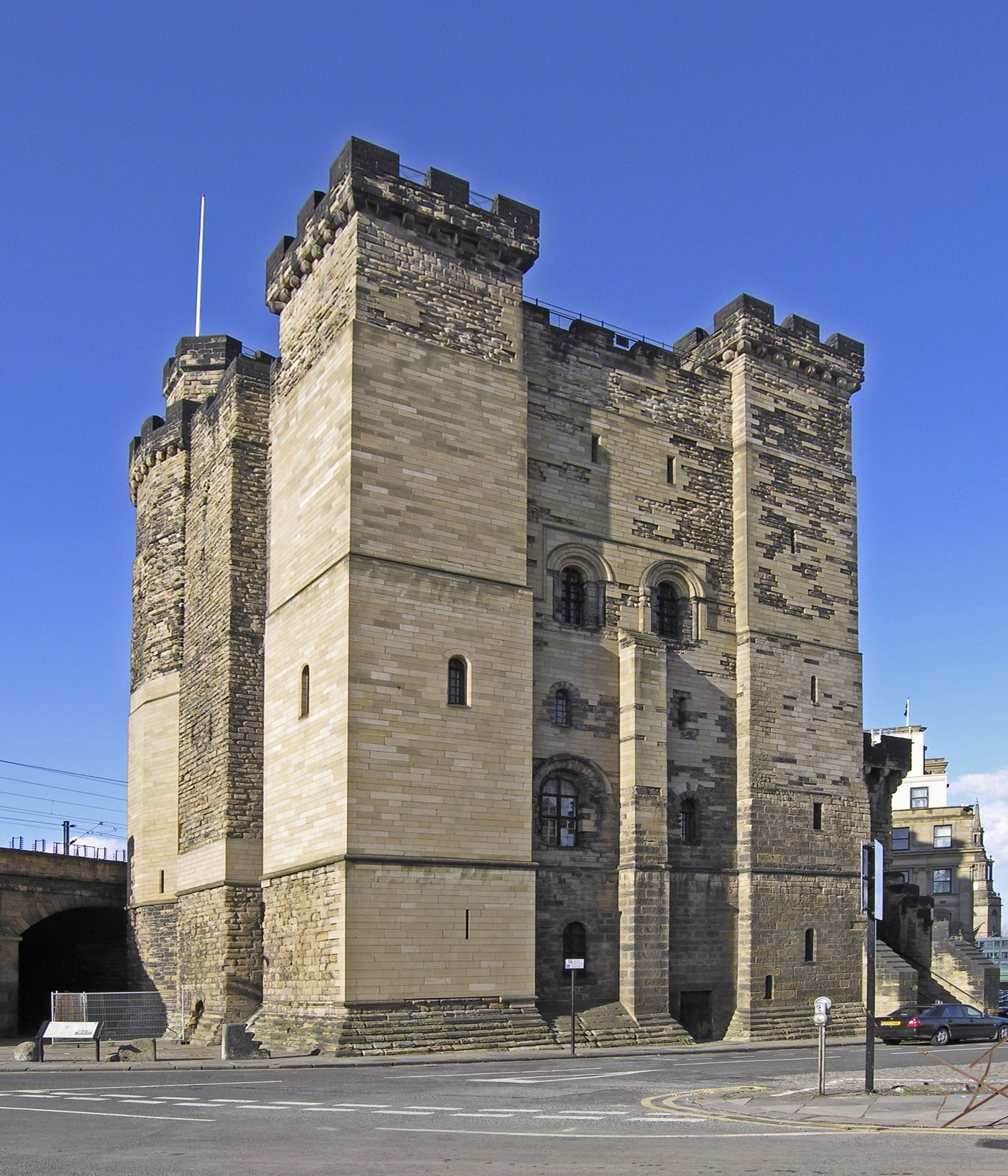|
Holy Trinity Church, Millom
Holy Trinity Church is a medieval building situated next to Millom Castle near the town of Millom, Cumbria, England. It is an active Anglican parish church in the deanery of Furness, the archdeaconry of Westmorland and Furness, and the diocese of Carlisle. Its benefice is united with those of St George (in the centre of Millom), St Anne, Thwaites, and St Luke, Haverigg. The church is recorded in the National Heritage List for England as a designated Grade I listed building. History The earliest parts of the church are the nave and chancel, which date from the 12th century. The south aisle was added in the early 13th century, and was rebuilt in a more elaborate style in about 1335 as the Huddlestone Chapel. Some details were restored in the 19th century, and the south porch was added in 1906. More drastic alterations were carried out in 1930 by Hicks and Charlewood of Newcastle, which included making the chancel wider. During this work, an ... [...More Info...] [...Related Items...] OR: [Wikipedia] [Google] [Baidu] |
Millom Castle
Millom Castle is an ancient building at Millom in Cumbria. It is a Grade I listed building and scheduled ancient monument. History A manor on the site was granted to Godard de Boyvill, owner of the Manor of Millom, in around 1134. The manor came into the Hudleston family's ownership in around 1240 when de Boyvill's granddaughter married into the Hudleston family. John Hudleston was given a licence to crenellate in 1335. The great tower dates from the 16th or perhaps 17th century. The Hudlestones took an active part in England's regional warfare. In the Wars of the Roses, Sir John Hudlestone fought on the Yorkist side, being present at the Battle of Blore Heath in 1459, and also the Battle of Bosworth Field in 1485. In 1460 Millom Castle was captured by Lancastrian forces. After the accession of Henry VII, Sir John and his son Henry secured a pardon and retained the estate. In the English Civil War of the 1600s, Sir William Hudlestone was a leading Royalist colonel in Cumberl ... [...More Info...] [...Related Items...] OR: [Wikipedia] [Google] [Baidu] |
Church Of England
The Church of England (C of E) is the established Christian church in England and the mother church of the international Anglican Communion. It traces its history to the Christian church recorded as existing in the Roman province of Britain by the 3rd century and to the 6th-century Gregorian mission to Kent led by Augustine of Canterbury. The English church renounced papal authority in 1534 when Henry VIII failed to secure a papal annulment of his marriage to Catherine of Aragon. The English Reformation accelerated under Edward VI's regents, before a brief restoration of papal authority under Queen Mary I and King Philip. The Act of Supremacy 1558 renewed the breach, and the Elizabethan Settlement charted a course enabling the English church to describe itself as both Reformed and Catholic. In the earlier phase of the English Reformation there were both Roman Catholic martyrs and radical Protestant martyrs. The later phases saw the Penal Laws punish Ro ... [...More Info...] [...Related Items...] OR: [Wikipedia] [Google] [Baidu] |
Gable
A gable is the generally triangular portion of a wall between the edges of intersecting roof pitches. The shape of the gable and how it is detailed depends on the structural system used, which reflects climate, material availability, and aesthetic concerns. The term gable wall or gable end more commonly refers to the entire wall, including the gable and the wall below it. Some types of roof do not have a gable (for example hip roofs do not). One common type of roof with gables, the gable roof, is named after its prominent gables. A parapet made of a series of curves (Dutch gable) or horizontal steps (crow-stepped gable) may hide the diagonal lines of the roof. Gable ends of more recent buildings are often treated in the same way as the Classic pediment form. But unlike Classical structures, which operate through trabeation, the gable ends of many buildings are actually bearing-wall structures. Gable style is also used in the design of fabric structures, with varying degree ... [...More Info...] [...Related Items...] OR: [Wikipedia] [Google] [Baidu] |
Vestry
A vestry was a committee for the local secular and ecclesiastical government for a parish in England, Wales and some English colonies which originally met in the vestry or sacristy of the parish church, and consequently became known colloquially as the "vestry". Overview For many centuries, in the absence of any other authority (which there would be in an incorporated city or town), the vestries were the sole ''de facto'' local government in most of the country, and presided over local, communal fundraising and expenditure until the mid or late 19th century using local established Church chairmanship. They were concerned for the spiritual but also the temporal as well as physical welfare of parishioners and its parish amenities, collecting local rates or taxes and taking responsibility for numerous functions such as the care of the poor, the maintaining of roads, and law enforcement, etc. More punitive matters were dealt with by the manorial court and hundred court, and latter ... [...More Info...] [...Related Items...] OR: [Wikipedia] [Google] [Baidu] |
Bay (architecture)
In architecture, a bay is the space between architectural elements, or a recess or compartment. The term ''bay'' comes from Old French ''baie'', meaning an opening or hole."Bay" ''Online Etymology Dictionary''. http://www.etymonline.com/index.php?allowed_in_frame=0&search=bay&searchmode=none accessed 3/10/2014 __NOTOC__ Examples # The spaces between posts, columns, or buttresses in the length of a building, the division in the widths being called aisles. This meaning also applies to overhead vaults (between ribs), in a building using a vaulted structural system. For example, the Gothic architecture period's Chartres Cathedral has a nave (main interior space) that is '' "seven bays long." '' Similarly in timber framing a bay is the space between posts in the transverse direction of the building and aisles run longitudinally."Bay", n.3. def. 1-6 and "Bay", n.5 def 2. ''Oxford English Dictionary'' Second Edition on CD-ROM (v. 4.0) © Oxford University Press 2009 # Where there a ... [...More Info...] [...Related Items...] OR: [Wikipedia] [Google] [Baidu] |
Ashlar
Ashlar () is finely dressed (cut, worked) stone, either an individual stone that has been worked until squared, or a structure built from such stones. Ashlar is the finest stone masonry unit, generally rectangular cuboid, mentioned by Vitruvius as opus isodomum, or less frequently trapezoidal. Precisely cut "on all faces adjacent to those of other stones", ashlar is capable of very thin joints between blocks, and the visible face of the stone may be quarry-faced or feature a variety of treatments: tooled, smoothly polished or rendered with another material for decorative effect. One such decorative treatment consists of small grooves achieved by the application of a metal comb. Generally used only on softer stone ashlar, this decoration is known as "mason's drag". Ashlar is in contrast to rubble masonry, which employs irregularly shaped stones, sometimes minimally worked or selected for similar size, or both. Ashlar is related but distinct from other stone masonry that is ... [...More Info...] [...Related Items...] OR: [Wikipedia] [Google] [Baidu] |
Rubble
Rubble is broken stone, of irregular size, shape and texture; undressed especially as a filling-in. Rubble naturally found in the soil is known also as 'brash' (compare cornbrash)."Rubble" def. 2., "Brash n. 2. def. 1. ''Oxford English Dictionary'' Second Edition on CD-ROM (v. 4.0) © Oxford University Press 2009 Where present, it becomes more noticeable when the land is ploughed or worked. Building "Rubble-work" is a name applied to several types of masonry. One kind, where the stones are loosely thrown together in a wall between boards and grouted with mortar almost like concrete, is called in Italian "muraglia di getto" and in French "bocage". In Pakistan, walls made of rubble and concrete, cast in a formwork, are called 'situ', which probably derives from Sanskrit (similar to the Latin 'in situ' meaning 'made on the spot'). Work executed with more or less large stones put together without any attempt at courses is called rubble walling. Where similar work is laid in cour ... [...More Info...] [...Related Items...] OR: [Wikipedia] [Google] [Baidu] |
Boss (architecture)
In architecture, a boss is a knob or protrusion of wood, stone, or metal. Description Bosses can often be found in the ceilings of buildings, particularly at the keystones at the intersections of a rib vault. In Gothic architecture, such roof bosses (or ceiling bosses) are often intricately carved with foliage, heraldic devices or other decorations. Many feature animals, birds, or human figures or faces, sometimes realistic, but often Grotesque: the Green Man is a frequent subject. The Romanesque Norwich Cathedral in Norfolk, England, has the largest number of painted carved stone bosses in the world; an extensive and varied collection of over one thousand individual pieces. Many of these decorated bosses still bear the original gilt and pigments from the time of their creation. A different sense of boss was also an important feature of ancient and Classical construction. When stone components were rough-cut offsite at quarries, they were usually left with bosses (small ... [...More Info...] [...Related Items...] OR: [Wikipedia] [Google] [Baidu] |
Newcastle Upon Tyne
Newcastle upon Tyne ( RP: , ), or simply Newcastle, is a city and metropolitan borough in Tyne and Wear, England. The city is located on the River Tyne's northern bank and forms the largest part of the Tyneside built-up area. Newcastle is also the most populous city of North East England. Newcastle developed around a Roman settlement called Pons Aelius and the settlement later took the name of a castle built in 1080 by William the Conqueror's eldest son, Robert Curthose. Historically, the city’s economy was dependent on its port and in particular, its status as one of the world's largest ship building and repair centres. Today, the city's economy is diverse with major economic output in science, finance, retail, education, tourism, and nightlife. Newcastle is one of the UK Core Cities, as well as part of the Eurocities network. Famous landmarks in Newcastle include the Tyne Bridge; the Swing Bridge; Newcastle Castle; St Thomas’ Church; Grainger Town including G ... [...More Info...] [...Related Items...] OR: [Wikipedia] [Google] [Baidu] |
Yale University Press
Yale University Press is the university press of Yale University. It was founded in 1908 by George Parmly Day, and became an official department of Yale University in 1961, but it remains financially and operationally autonomous. , Yale University Press publishes approximately 300 new hardcover and 150 new paperback books annually and has a backlist of about 5,000 books in print. Its books have won five National Book Awards, two National Book Critics Circle Awards and eight Pulitzer Prizes. The press maintains offices in New Haven, Connecticut and London, England. Yale is the only American university press with a full-scale publishing operation in Europe. It was a co-founder of the distributor TriLiteral LLC with MIT Press and Harvard University Press. TriLiteral was sold to LSC Communications in 2018. Series and publishing programs Yale Series of Younger Poets Since its inception in 1919, the Yale Series of Younger Poets Competition has published the first collection of ... [...More Info...] [...Related Items...] OR: [Wikipedia] [Google] [Baidu] |
Aisle
An aisle is, in general, a space for walking with rows of non-walking spaces on both sides. Aisles with seating on both sides can be seen in airplanes, certain types of buildings, such as churches, cathedrals, synagogues, meeting halls, parliaments and legislatures, courtrooms, theatres, and in certain types of passenger vehicles. Their floors may be flat or, as in theatres, stepped upwards from a stage. Aisles can also be seen in shops, warehouses, and factories, where rather than seats, they have shelving to either side. In warehouses and factories, aisles may be defined by storage pallets, and in factories, aisles may separate work areas. In health club A health club (also known as a fitness club, fitness center, health spa, and commonly referred to as a gym) is a place that houses exercise equipment for the purpose of physical exercise. In recent years, the number of fitness and health se ...s, exercise equipment is normally arranged in aisles. Aisles are disti ... [...More Info...] [...Related Items...] OR: [Wikipedia] [Google] [Baidu] |
Chancel
In church architecture, the chancel is the space around the altar, including the choir and the sanctuary (sometimes called the presbytery), at the liturgical east end of a traditional Christian church building. It may terminate in an apse. Overview The chancel is generally the area used by the clergy and choir during worship, while the congregation is in the nave. Direct access may be provided by a priest's door, usually on the south side of the church. This is one definition, sometimes called the "strict" one; in practice in churches where the eastern end contains other elements such as an ambulatory and side chapels, these are also often counted as part of the chancel, especially when discussing architecture. In smaller churches, where the altar is backed by the outside east wall and there is no distinct choir, the chancel and sanctuary may be the same area. In churches with a retroquire area behind the altar, this may only be included in the broader definition of chancel. I ... [...More Info...] [...Related Items...] OR: [Wikipedia] [Google] [Baidu] |






.jpg)

